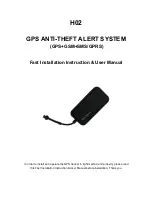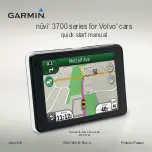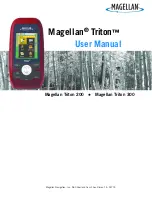
By comparing the time the signals were transmitted from the satellites and
the time they were recorded, the receiver calculates how far away each
satellite is. The distance of the receiver from three or more satellites reveals
its position on the surface of the planet. With these distance measurements,
the receiver might also calculate speed, bearing, trip time, distance to
destination, altitude, and more.
The satellite-navigation device may display its position as longitude/latitude,
Universal Transverse Mercator (UTM), Military Grid (MG), or simply as a
point on an electronic map. Many Thales Navigation receivers provide
comprehensive mapping data, making satellite navigation an easy tool to
enhance your recreational and industrial activities.
2.2.1 Line of Sight
Satellite-navigation receivers operate by line of sight with global-
positioning satellites. This means that at least three satellites must be in
“view” of a receiver in order to calculate longitude and latitude. A fourth
satellite must also be within line of sight to calculate altitude. On average,
eight satellites are continuously within line of sight of every position on
Earth; the more satellites in view, the more accurate the positioning.
Though the radio signals of navigation satellites will pass through clouds,
glass, plastic, and other lightweight materials, satellite-navigation receivers
will not work underground or in other enclosed spaces.
Chapter 2: GPS Information
2.3 A Word on the Safe Usage of GPS Maps
Just like paper maps, maps on GPS devices vary greatly in terms of
information included and visual presentation. Whether topographical maps,
roadmaps or marine charts, each map and the data it presents is designed for
a specific purpose. For example, marine charts will often present only a
minimal representation of roadways and are not a substitute for street maps.
Topographic maps usually provide minimal detail about bodies of water and
do not contain marine navigational markers.
Maps also vary widely in scale: the smaller the scale, the more detailed the
map. Therefore, when using GPS maps (just as with paper maps) it is
important to consider what type of map you are using in your explorations
and to use common sense.
2.3.1 From Source to Destination















































